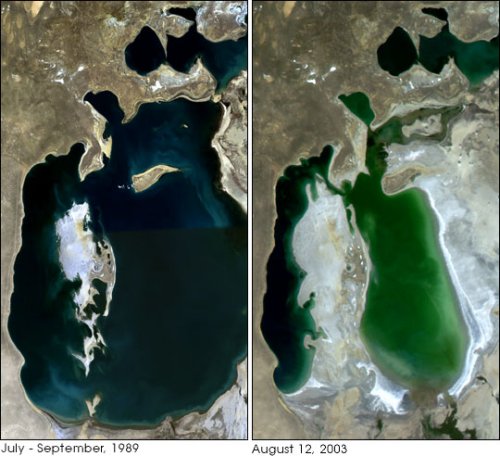Last Places on Earth
Today, we look for last occurrences. The University of Houston's College of Engineering presents this series about the machines that make our civilization run, and the people whose ingenuity created them.
What an idea in the June 2007 issue of New Scientist! An article identifies seventeen of the last places on Earth. Last place with no invasive species, last place to be discovered, last place where no one has tasted Coca Cola. Well, actually, the article decides that no region has been untouched by Coke.
The last place anyone would want to live, according to measures of longevity, education, infant mortality -- is Niger. Of course that' only a work in progress. Maybe, when they have more reliable measures of how happy a citizenry is, some other country will claim that dubious prize.
They offer Dongba in southwest China as the last place where people write with pictures. Their writing is far more literal than Chinese pictographs are too complex for anything but religious ceremonies. You wouldn't want to read a novel written in Dongba.
The last place still unmapped is a surprise. It's the bed of the Aral Sea -- once the fourth-largest lake in the world and a fine Russian resort area. Then Lenin's government decided that the Amu Darya and Syr Darya Rivers, which fed it, should be diverted for irrigation. During the 1930s an irrigation system was begun. It was terribly inefficient -- wasting most of the water it diverted. And, by the 1960s, the Aral Sea began shrinking. Today, only a quarter of the Sea remains, and it's surrounded by 50,000 square kilometers of desert scrubland. The last terra incognita is an unexplored wilderness of virgin lake bottom.
Then there's the last land where dinosaurs walked. This one is fraught with ambiguity. Several sites yield questionable evidence of so-called lazarus dinosaur species -- that is, ones that lived on for a while after the probable meteor impact 65-million years ago. But the only place where we find unequivocal dinosaur footprints from a thousand years after the impact is near Ludlow, Colorado. Ludlow is more of a place marker than an answer. But it makes a neat conversation piece.
The last place to make radio contact with the world (at the time of the article) was a tiny Pacific atoll, Swains Island, population 37. When, on July 24th, 2006, ham radio operators learned that it was a non-contacted entity, they hurried there. Four days later, they'd set up broadcasting, and Swains Island was on-air.
And so on: For the last place to hear the strangest language, go to 25 surviving nomads in southern Siberia who speak Tofa. Among its many oddities is a counting system that goes by body parts. To say 61 in Tofa, you say hand turnaround second time go back biceps other side.
And I'm left weighing my own list of lasts. When will be, or was, the last time I see Paris or some old friend. What'll be the number of my last radio episode? But enough of that! Right now, I need to go find an article, not about lasts, but about firsts.
I'm John Lienhard, at the University of Houston, where we're interested in the way inventive minds work.
(Theme music)
The Last Place on Earth. New Scientist, June 16-22, 2007: pp. 34-47.
For more on the Aral Sea, see: https://en.wikipedia.org/wiki/Aral_Sea

Shrinkage of the Aral Sea in just 14 years. (Images courtesy of NASA)